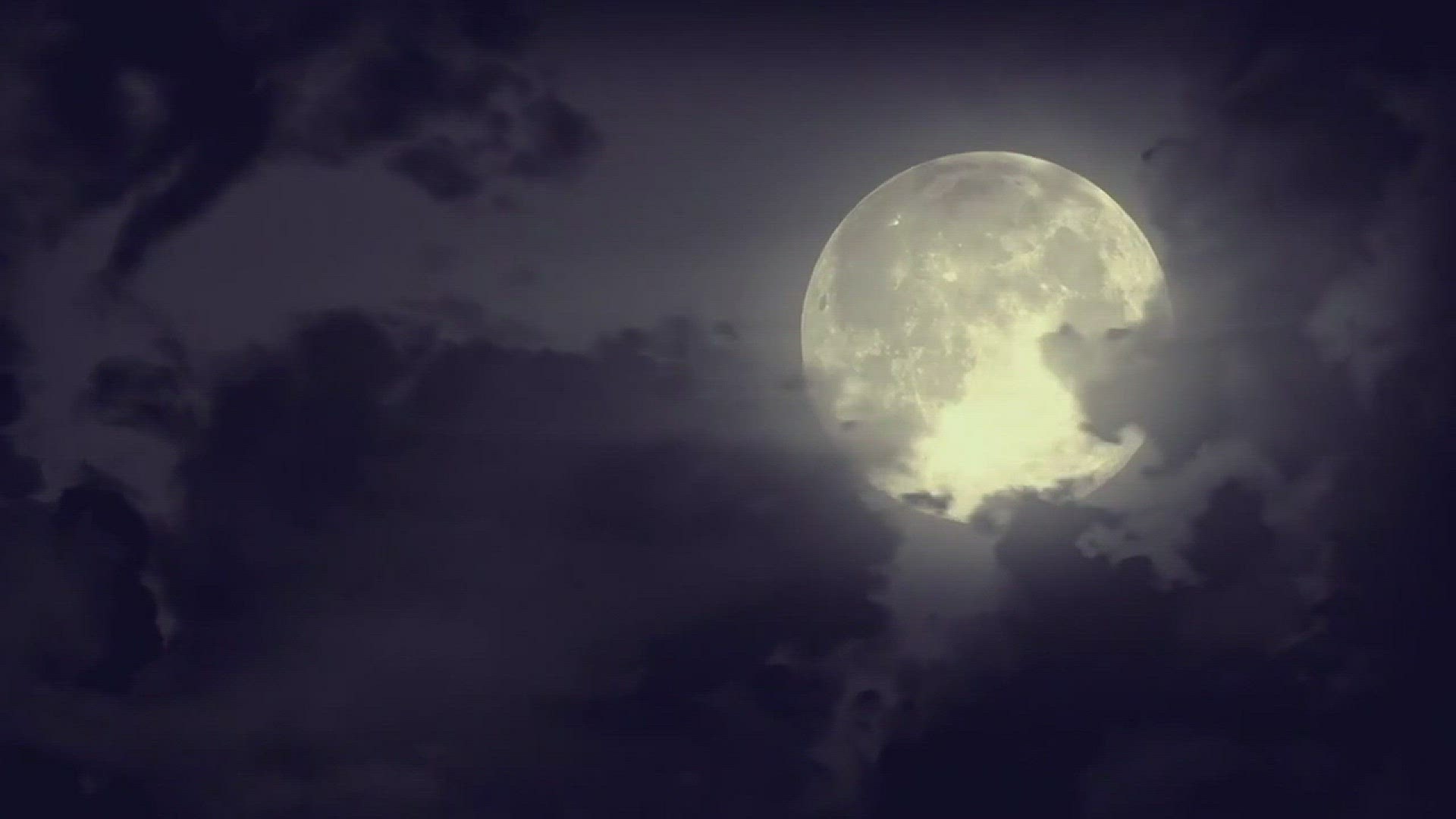LOUISVILLE, Ky. — If there’s one thing everyone seems to love, it’s the moon.
August is a special month for our lunar neighbor as we’ll have not one, but two full moons. Fascinatingly enough, they’ll occur on opposite ends of the calendar.
Today is the Sturgeon Moon. Peak illumination is at 2:32 p.m. EDT, but we’ll still be able to see it nice and bright later tonight thanks to mostly clear to partly cloudy skies.
Why sturgeon moon? Historically, the large sturgeon fish of the Great Lakes and Lake Chaplain are most easily caught during this time of the year.
There are 29 species of sturgeon around the world. Sturgeon themselves are quite large and long-lived.
The Lake sturgeon of the Great Lakes, Hudson Bay, and Mississippi River reach sizes of six and a half feet in length, weigh up to 200 pounds, and live incredibly long lives. Males are known to live to 55 years, but there have been documented cases of females living to 150 years.


The Atlantic sturgeon, found in river and coastal waters from Florida to Canada, are the largest. They can reach up size up to 14 feet long, 800 pounds, and a lifespan of 60 years. At least five of these species are endangered.


The second full moon of August will happen on Aug. 30 – 31. This is the blue moon and will also be a super moon. Super moons aren’t unique as they happen every year. Simply put, it’s when the moon is at its closest point to Earth in its orbit.
Supermoons are around 8% larger in size appearance and 16% brighter.


Blue moons; however, don’t occur as often. NASA says blue moons occur usually once every two or three years. The last blue moon occurred on August 22, 2021.
Here’s where it gets interesting. There are technically two kinds of blue moons: monthly and seasonal.
A monthly blue moon is the second full moon that occurs within a single month. This is the definition most people know colloquially, but this was the second definition to come around.
The astronomical definition of a blue moon, used by scientists, is more complicated (of course). It refers to the fourth full moon during an astronomical season; hence the term seasonal blue moon. The four seasons last three months each, so if a season has four full moons that fourth one is referred to as the seasonal blue moon.
Can the moon take on a blue color? NASA says yes, but it’s very rare. For the moon to be blue there needs to be an abundance of water droplets in the air, certain cloud types, and very fine particles thrown high into the atmosphere from something like a volcanic eruption.


The most famous occurrence of a literal blue moon happened after the catastrophic 1883 eruption of Krakatoa in Indonesia. The blue coloring was reported to have lasted for several years. Other volcanic eruptions, or even wildfires, have been known to produce blue moons.
Conditions must be just right. The fine dust or smoke particles need to be at least 0.6 microns to scatter red light and let the blue light through.
The next blue moon will be August 19-20, 2024. The next blue supermoon is much longer away as it's much more rare. That won't occur until 2032.
Make it easy to keep up-to-date with more stories like this. Download the WHAS11 News app now. For Apple or Android users.
Have a news tip? Email assign@whas11.com, visit our Facebook page or Twitter feed.

